Winter is a challenging season for residential lawns because turfgrass is forced into dormancy while being subjected to harsh and often unpredictable weather conditions. Taking proactive lawn care steps to avoid winter damage is just as important as what you do for your lawn after dormancy in early spring. Keep reading to learn how to keep your lawn healthy this winter and all year long!
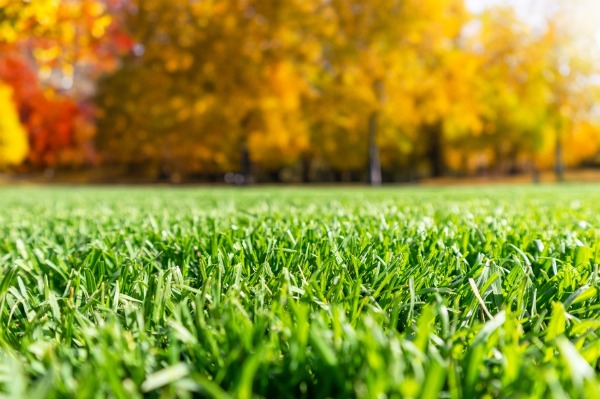
During the final weeks of active growth, turfgrass shifts its energy allocation away from blade expansion and toward root development, storing resources within the plant. When no fall fertilization is applied, or when the wrong formulation is used, grass may enter dormancy weak and unprepared for long periods of freezing. Poor nutrient storage leads to slower spring green-up, sparser density, and increased disease susceptibility. Conversely, a properly timed, balanced fertilization builds strong cell walls, improves root resilience, and provides a nutrient reserve that fuels recovery once temperatures rise.
Ways to prevent and minimize damage:
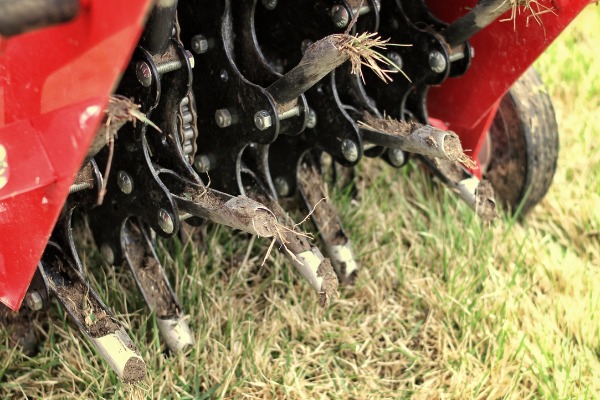
Soil compaction is a subtle yet serious contributor to winter damage because it reduces pore space necessary for oxygen movement, drainage, and root respiration. As snow accumulates on dense soil, moisture cannot percolate downward, creating saturated conditions that foster rot and fungal development. Compaction may occur from heavy summer foot traffic, landscaping equipment, or dense clay-based soils that naturally tighten over time. In spring, compacted areas reveal weak, thin turf that warms slowly and struggles to reestablish density due to inadequate root structure.
Ways to prevent and minimize damage:
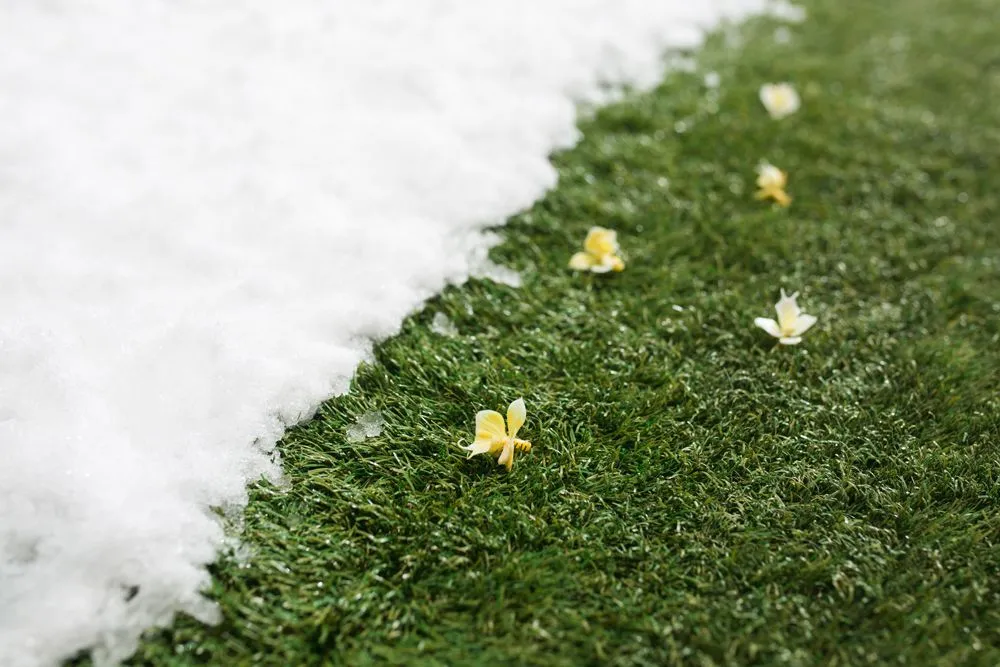
Winter desiccation occurs when grass loses moisture faster than its roots can absorb it, often due to dry cold fronts, high winds, or lack of snow cover. When soil freezes without adequate moisture reserves, cells within the plant begin to dehydrate, leading to tissue death. This damage is commonly seen on south-facing lawns, hillsides, and newly established turf where roots are shallow and vulnerable. In spring, desiccation manifests as straw-colored patches that respond poorly without reseeding or renovation.
Ways to prevent and minimize damage:
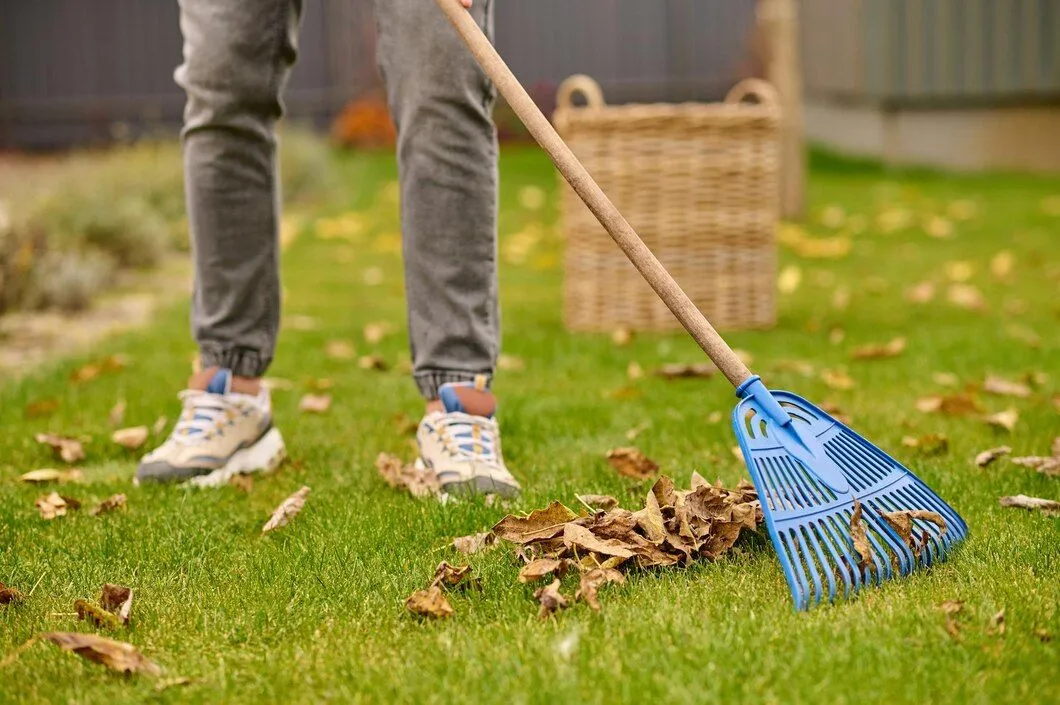
Allowing leaves, branches, and yard debris to settle across the lawn creates a damp, shaded environment perfect for fungal activity. As snow accumulates, these materials trap moisture and prevent airflow, leading to rapid decay of the turf beneath. In addition, decomposing leaves produce heat and pockets of microbial activity that can damage grass crowns. Come spring, lawns where debris sat often reveal circular patches of dead or matted grass that require overseeding to restore density.
Ways to prevent and minimize damage:
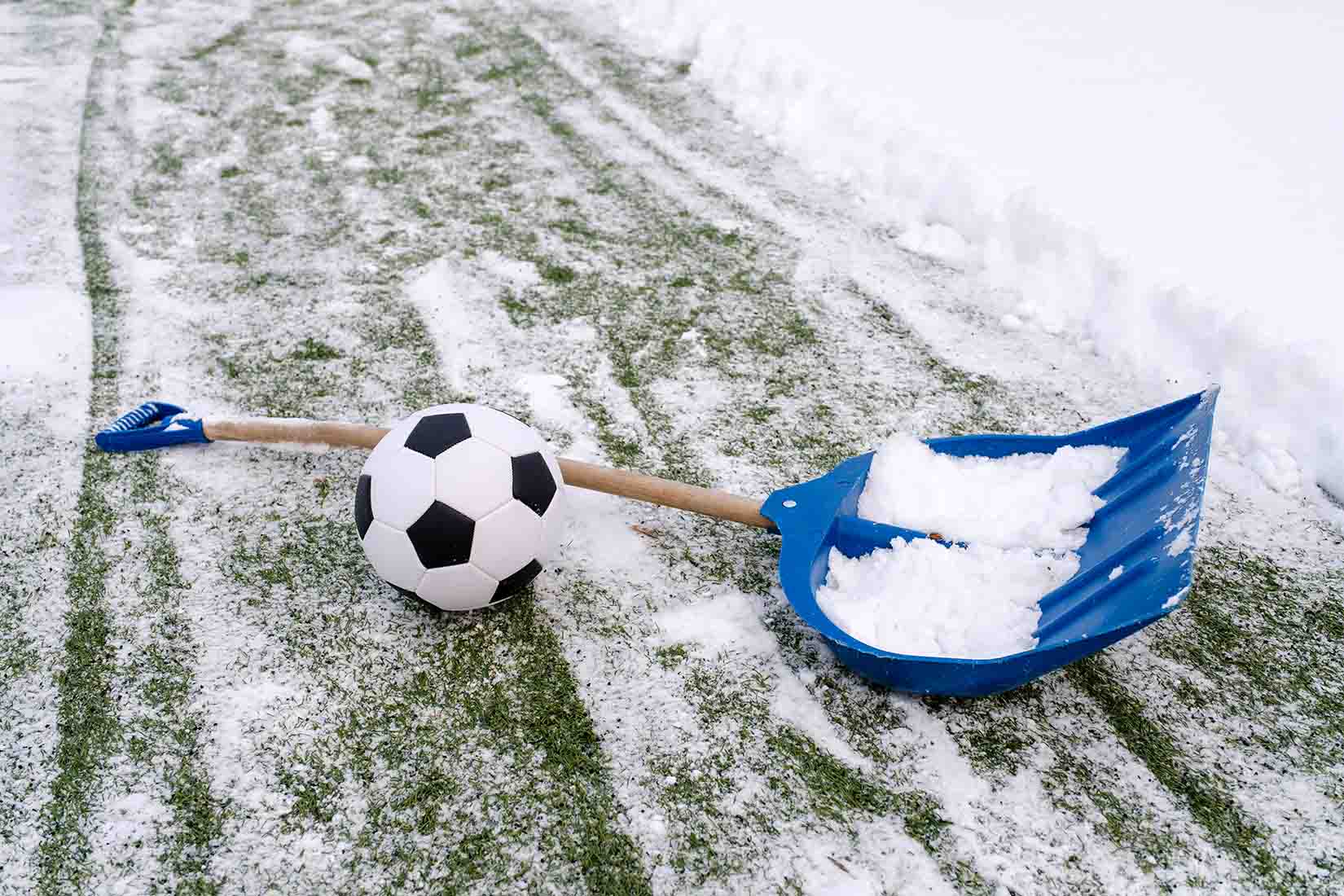
Grass blades become fragile and brittle when frozen, and foot traffic can shatter cellular structures, leading to breakage and crown damage. Frozen soil also becomes more compacted when stepped on, eliminating the air channels grass roots need for respiration. These injuries may not be noticeable until spring, when turf breaks dormancy thin, patchy, or unevenly. Paths across frozen lawns often reveal brown streaks or flattened lines that persist for several weeks.
Ways to prevent and minimize damage:

Salt-based de-icers used on driveways and sidewalks can burn turf by disrupting cellular hydration, altering soil chemistry, and binding essential nutrients in ways plants cannot use. When snow melts and salt-laden runoff flows into the lawn, turf near pavement edges often suffers first. These areas may appear burned, stunted, or discolored well into spring, and repeated exposure makes recovery increasingly difficult without soil amendments.
Ways to prevent and minimize damage:

Even well-prepared lawns may experience winter injury, especially after unusually harsh conditions. Once snow melts, matted turf, slow-warming soils, and poor airflow can delay recovery. Without intervention, weakened areas become breeding grounds for opportunistic weeds and diseases. Proactive spring maintenance helps restore turf health, accelerate regrowth, and improve stand density before summer stresses arrive.
Ways to prevent and minimize damage:
Persistent winter damage may indicate deeper issues such as poor drainage, grading problems, recurring fungal pathogens, or soil structure deficiencies. Professional lawn care providers like us can diagnose causes, develop treatment plans, and recommend advanced prevention strategies.
Our lawn care packages for New Jersey properties are designed to set up your lawn for success in spring and give you the healthiest growth possible all season long. If you want to protect your lawn from winter damage, call Healthy Lawn today to get started with a free quote!